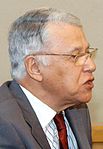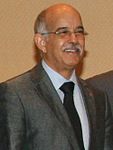Moroccan parliamentary election, 2011
|
|
|||||||||||||||||||||||||||||||||||||||||||||||||||||||||||||||||||||||||||||||
|
|||||||||||||||||||||||||||||||||||||||||||||||||||||||||||||||||||||||||||||||
|
|||||||||||||||||||||||||||||||||||||||||||||||||||||||||||||||||||||||||||||||
|
|||||||||||||||||||||||||||||||||||||||||||||||||||||||||||||||||||||||||||||||
An early parliamentary election was held in Morocco on 25 November 2011, brought forward from 2012 and then postponed from 7 October 2011.
Public protests as part of the Arab Spring in February 2011 led King Mohammed VI to announce an early election, a process of constitutional reform granting new civil rights, and the relinquishing of some of his administrative powers. Following a referendum on 1 July 2011, the new constitution was ratified on 13 September.
Of the Lower House of Parliament's 395 seats, 305 were elected from party lists in 92 constituencies and the additional 90 seats were elected from a national list, with two thirds reserved for women and the remaining third reserved for men under the age of 40.
30 parties participated in the elections, 18 of which gained seats. The vast majority of seats was won by three political groups: the moderate Islamist Justice and Development Party (PJD); an eight-party "Coalition for Democracy" (led by the RNI) headed by Morocco's incumbent minister of finance Salaheddine Mezouar; and the Koutla ("Coalition") alliance of the incumbent prime minister Abbas El Fassi.
Results of the election, in terms of numbers of seats won by each party, were announced on 27 November 2011. But no voting figures of any kind were released, and still had not been by the end of 2011. This was in contrast with the 2007 elections, for which voting figures were released by the Interior Ministry. The official turnout was 45%, but some comments suggested it was much lower.
The Justice and Development party won 107 seats, giving it the largest parliamentary representation, although not a majority. According to the new constitution, this made its leader, Abdelillah Benkirane, prime minister.
...
Wikipedia






